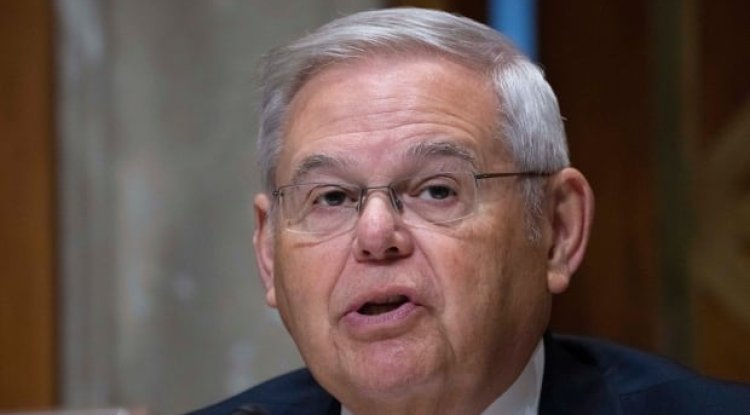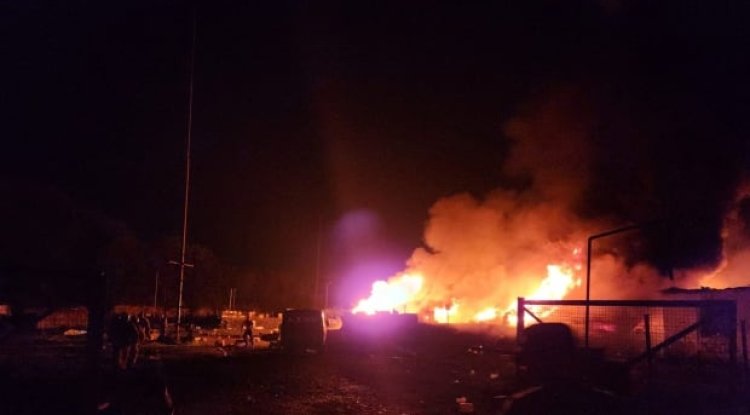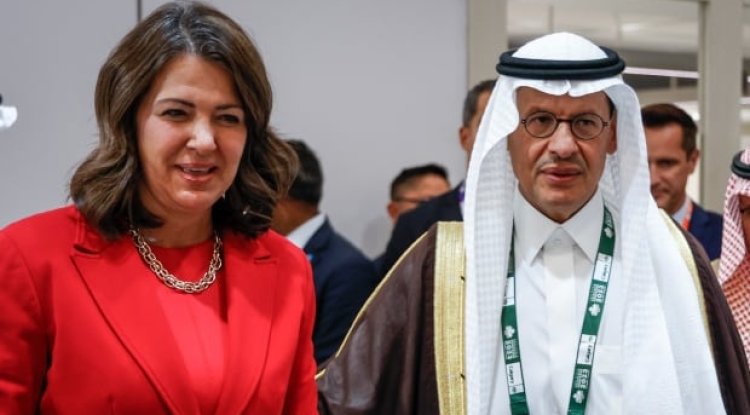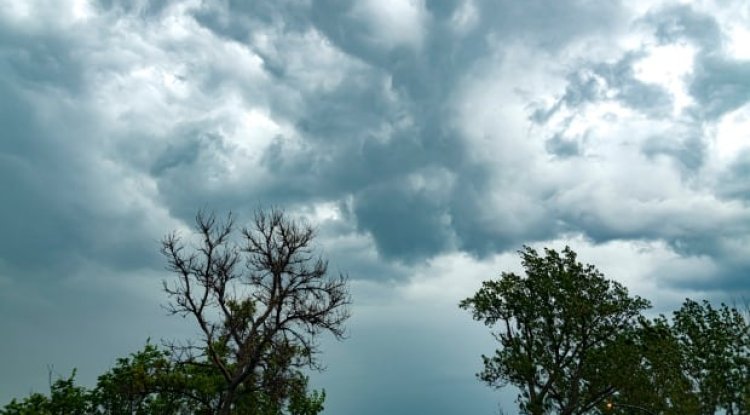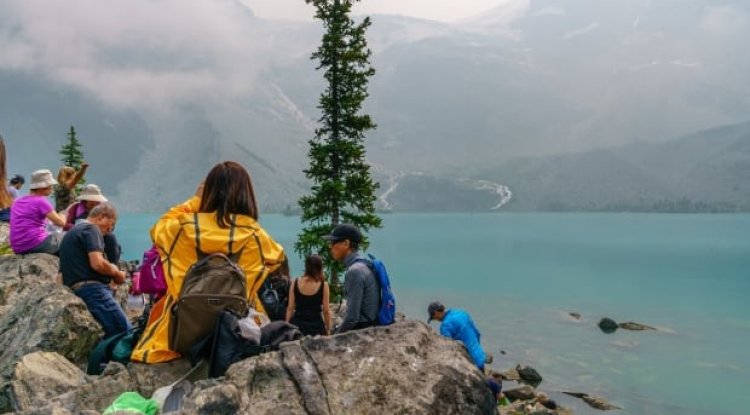Northern Ontario could see some very tight races in next federal election with new riding map
A campaign worker writes down the votes from a poll in the Nickel Belt riding during the 2021 federal election. The electoral math across northern Ontario will be very different in the next campaign with big changes to the riding map. (Erik White/CBC)It's official: northern Ontario will send one less MP to the House of Commons in the next federal election.The approval of the plan by parliament this week comes after many months of drawing and redrawing Canada's electoral map. "Many I don't think are going to realize that our riding doesn't exist until they go to vote," said Heather Wilson, a former Liberal candidate in the riding of Algoma-Manitoulin-Kapuskasing.It will be split up and swallowed up by three neighbouring ridings and Wilson worries the "uniqueness of northern Ontario" found in the rural areas of the region will be lost when lumped in with the larger cities of Sudbury, Sault Ste. Marie and Timmins."I 100 per cent believe that they're going to be watered down," she said.Re
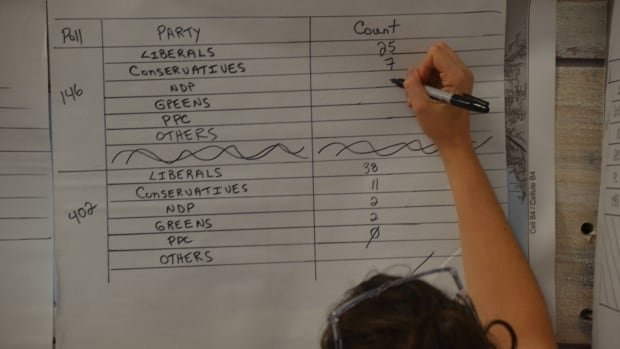
It's official: northern Ontario will send one less MP to the House of Commons in the next federal election.
The approval of the plan by parliament this week comes after many months of drawing and redrawing Canada's electoral map.
"Many I don't think are going to realize that our riding doesn't exist until they go to vote," said Heather Wilson, a former Liberal candidate in the riding of Algoma-Manitoulin-Kapuskasing.
It will be split up and swallowed up by three neighbouring ridings and Wilson worries the "uniqueness of northern Ontario" found in the rural areas of the region will be lost when lumped in with the larger cities of Sudbury, Sault Ste. Marie and Timmins.
"I 100 per cent believe that they're going to be watered down," she said.
Redrawing the ridings of northeastern Ontario
- Sault Ste. Marie takes in Wawa and Dubreuilville to the north and stretches to the east, covering St. Joseph Island, Thessalon, Blind River, Elliot Lake and Spanish to become Sault Ste. Marie-Algoma.
- Timmins-James Bay adds Smooth Rock Falls, Kapuskasing, Moonbeam, Hearst and Chapleau and will be re-branded Timmins-James Bay-Mushkegowuk.
- Nipissing-Timiskaming takes Englehart, Earlton, Elk Lake and surrounding areas from the Timmins riding
- Nickel Belt adds Massey, Webbwood, Nairn Centre, Espanola and Manitoulin Island, as well Naughton and Whitefish and in the next election will be called Sudbury East-Manitoulin-Nickel Belt.
- Sudbury takes in parts of Greater Sudbury from Nickel Belt including Falconbridge, Garson, Coniston, Wahnapitae and much of the south end of Sudbury.
All three major parties agree that having one less MP in Ottawa will be bad for the north, but the change could be good for some of them in the next federal election.
"We're pretty excited about what that means for us," said Gordan Rennie, president of the Nipissing-Timiskaming Conservative Association.
The riding is gaining the small towns of Englehart, Earlton and Elk Lake, which Rennie says helped "put us over the top" when the Tories last won the riding in 2011, by a margin of just 18 votes.
He says the party's strong poll numbers over the summer, plus the coming retirement of long-time Liberal MP Anthony Rota are also lifting spirits.
"We've done the numbers. We do have hundreds of members of the Conservative Party in the part of Timiskaming that's going to be added to the riding," said Rennie, adding that a few potential candidates are currently "kicking the tires."
"When you put the votes together in the new riding, we're within 5 per cent of the Liberals."
If you look at the numbers from the last few federal elections, the changes to the boundary lines could make some of the races in the northeast much tighter.
Nickel Belt is losing parts of Greater Sudbury that Liberal Marc Serré won by several hundred votes in 2019 and 2021, while adding Espanola and Manitoulin that were won handily by the NDP and where the Conservatives came a strong second in 2021.
The Liberals won Nickel Belt by about 4,000 votes in each of the last two campaigns, but under the new boundaries, they would drop about 2,000 votes, been neck-and-neck with the NDP in 2019 and there would have been a virtual three-way tie in 2021, when the Conservatives jumped up by about 4,000 votes.
Sharon Murdock, a former NDP MPP for Sudbury and now a federal Nickel Belt organizer, says getting name recognition and understanding the issues in these vast new ridings isn't going to be easy for candidates.
"It's going to be a massive undertaking and I don't care which party you're with," she said.
"It's hard to do in the current boundaries, it's going to be extremely difficult in the new boundaries."
If you apply the 2021 vote count to the new boundaries, the NDP would have still won Timmins-James Bay by about the same margin, while the Liberals would have held onto Sudbury, although the Conservatives would have gained some 3,000 votes and threatened to take second place from the NDP.
Just 47 votes decided Sault Ste. Marie in the last federal election and taking in thousands of new voters from Algoma would make it even closer.
The Conservatives did a bit better than the Liberals in the parts of Algoma joining the riding, but the two parties would still only have been separated by a few dozen votes, while some 7,000 NDP votes would have lifted them from a distant third into contention for the seat.
Gayle Broad, a former president of the Ontario NDP and a member of the federal Sault Ste. Marie riding association, says assuming the numbers would have stayed the same while the map changes is "rather dismissive of the voter."
"I think it's always difficult to predict outcomes based on the realignment of riding boundaries," she said.
"In times gone by, people were very loyal to a particular party. I think nowadays people are more likely to vote for different parties based on their different platforms and how well their members are able to represent the constituents."

Sonny Spina, the Conservative candidate who almost won the Sault two years ago, hasn't decided if he'll run again, but doesn't think the bigger riding will factor into his decision.
"I really don't think that changes things for an elected official," said Spina, now a Sault Ste. Marie city councillor.
"These new lines adds people to Sault Ste. Marie and adds people to our area and I think that's just an opportunity for the elected official to represent those people in the best way they can."
Meanwhile, three-term Liberal MP Terry Sheehan says he's eager to run in Sault Ste. Marie-Algoma, while noting it now has the challenge of being large geographically, while "rivalling" Toronto ridings in terms of population with 113,000 people.
"One of the things that's driving me is that Sault Ste. Marie and Algoma is on the border of the United States and I'm seeing the Americanization of our politics," he said.
"Not on my watch. I'm standing up for Canada. I'm standing up for Algoma and I'm standing up for Sault Ste. Marie."
What's Your Reaction?













